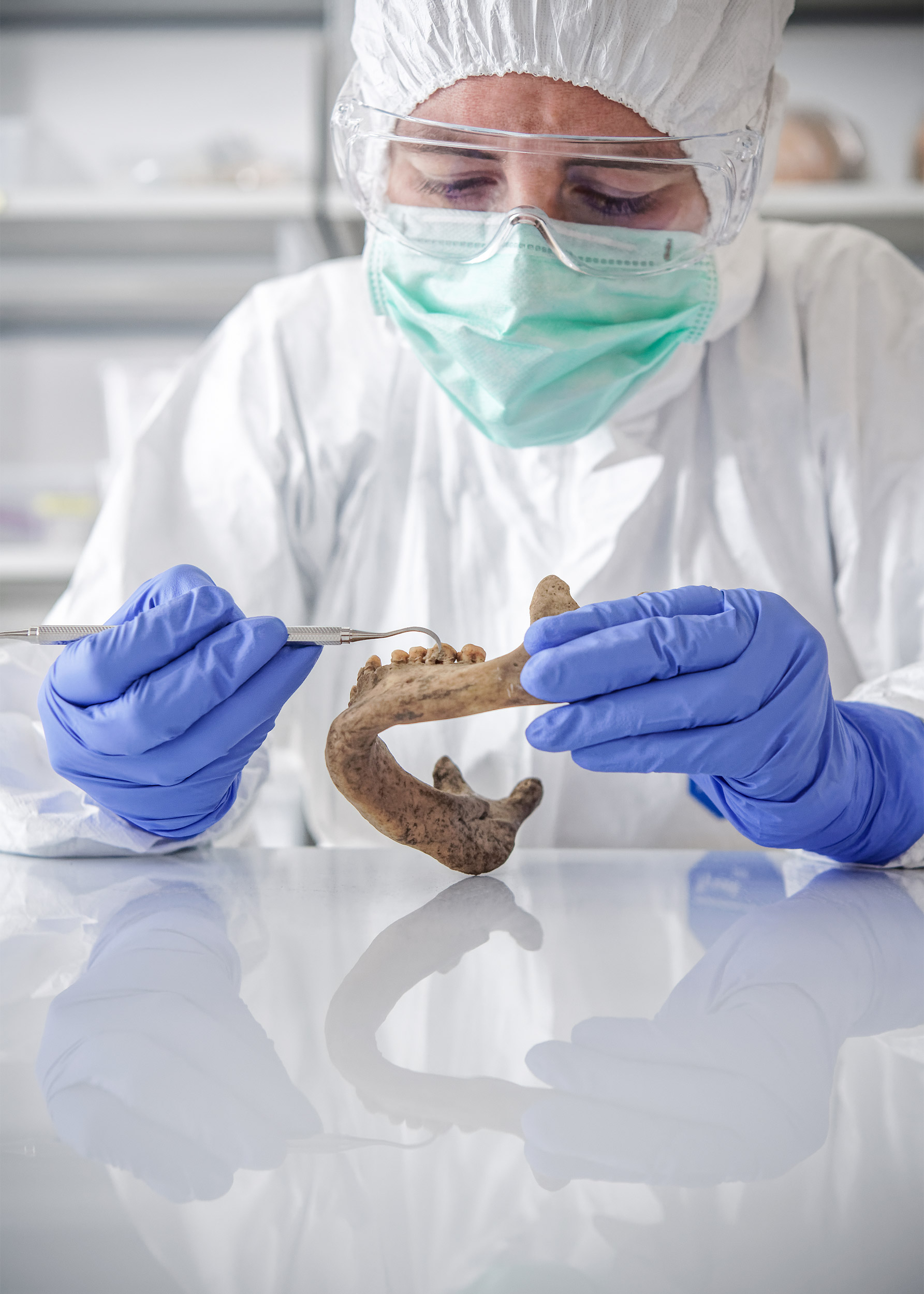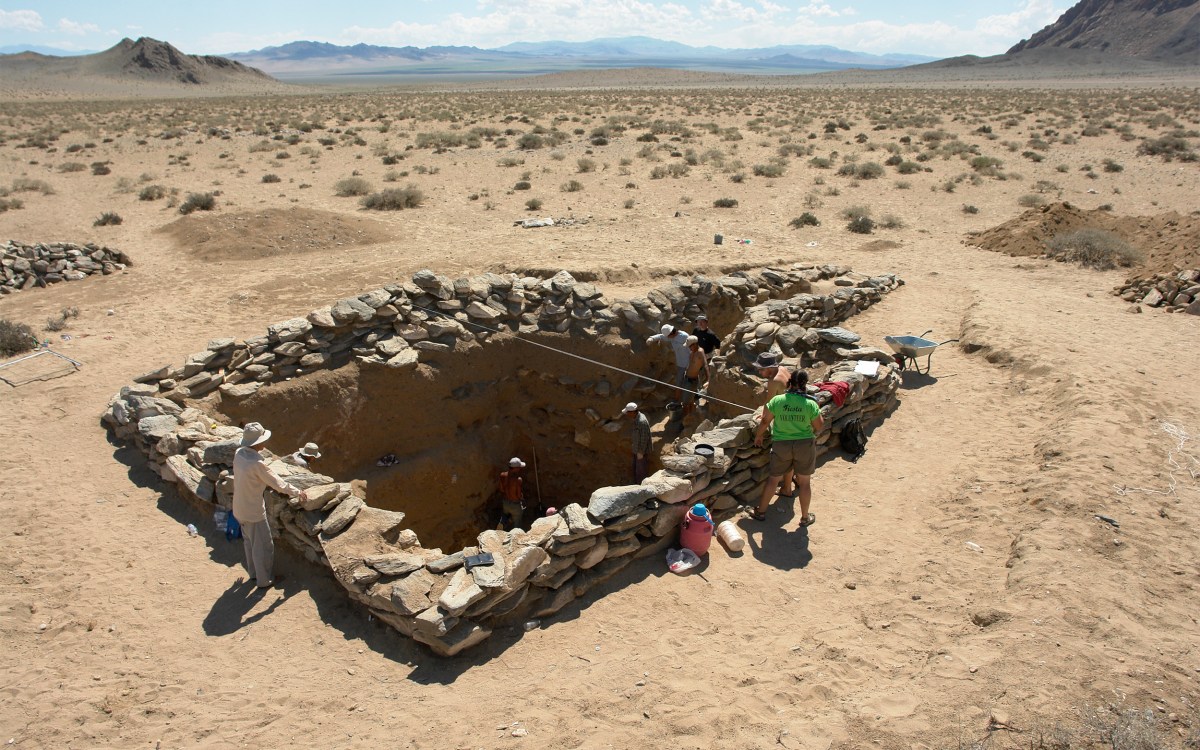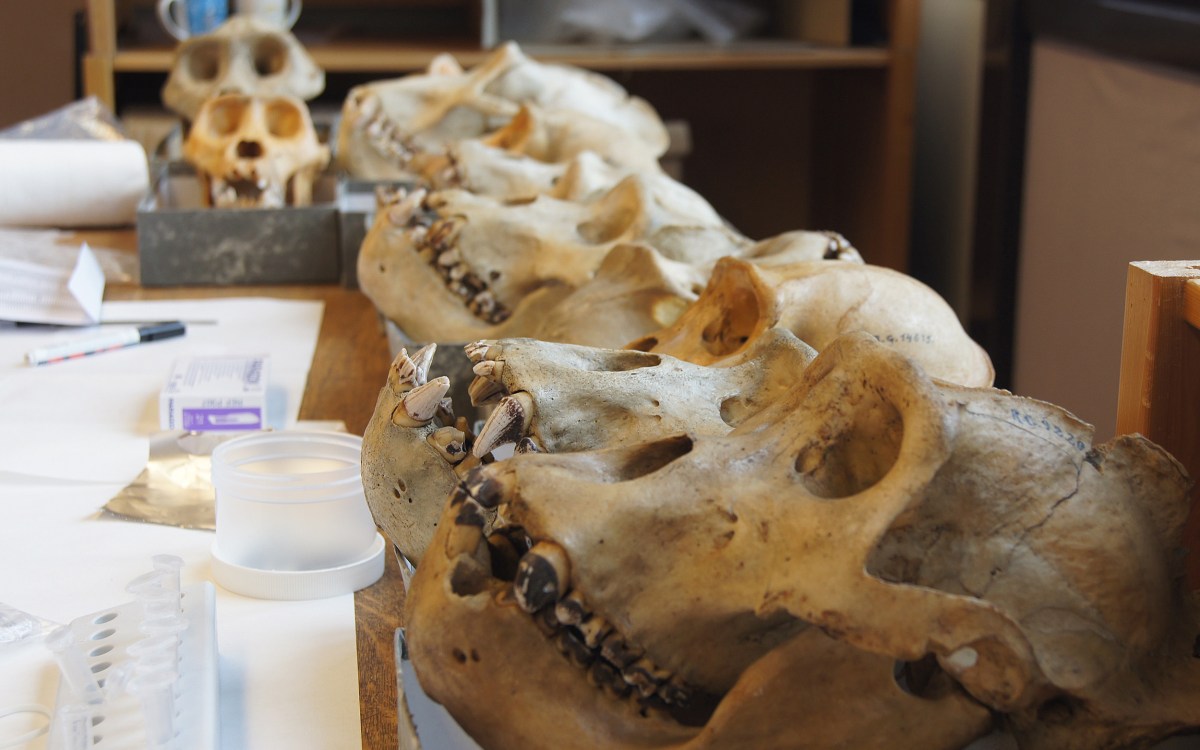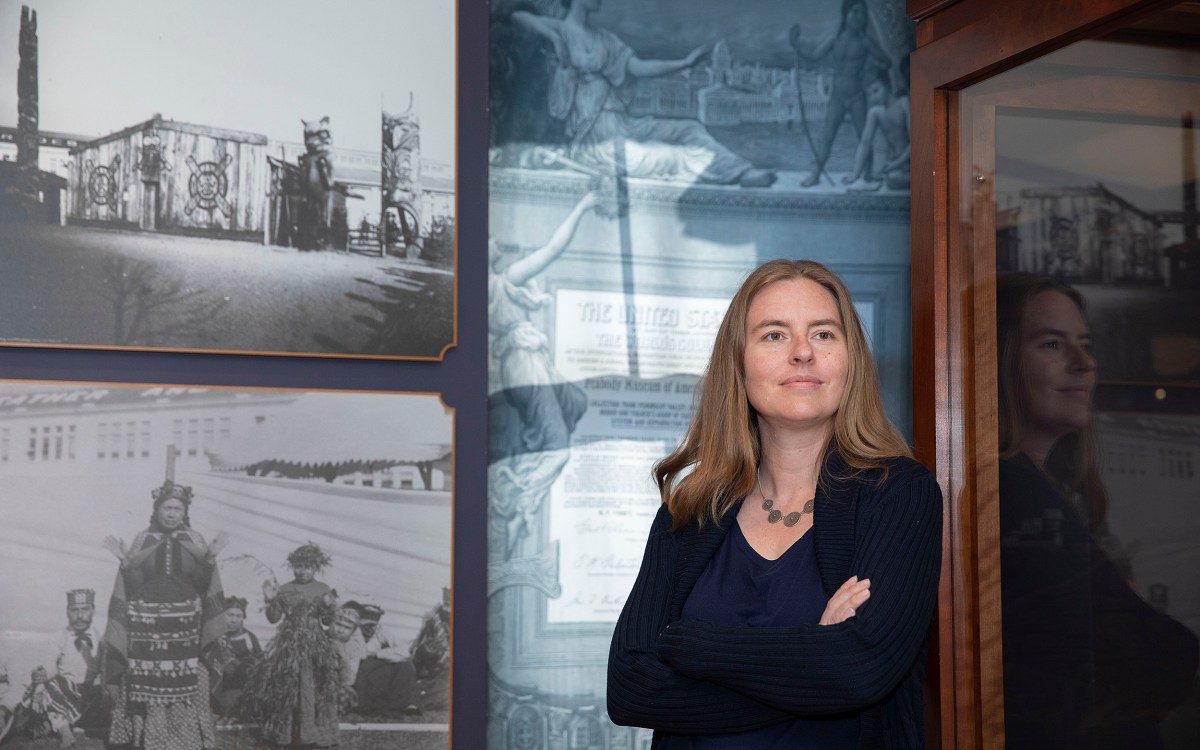Bringing Stone Age genomic material back to life
Breakthroughs will enable exploration of Earth’s biochemical past, with hopes of discovering new therapeutic molecules

Using ancient tooth tartar, Christina Warinner and her team have successfully reconstructed the genomes of microorganisms up to 100,000 years old.
Photo credits: Werner Siemens Foundation, Felix Wey
For the first time, molecules dating to the Stone Age have been revived in the lab.
This breakthrough was made possible only after scientists achieved another first — they successfully reconstructed the genomes of ancient microorganisms up to 100,000 years old, said Christina Warinner, associate professor of anthropology at Harvard and a senior author on the new study. “That’s 90,000 years older than the next nearest reconstructed genome.”
Warinner, who is also a group leader with the Max Planck Institute for Evolutionary Anthropology, worked with an interdisciplinary team of researchers to achieve this feat. The group’s findings and genome-reconstruction techniques are outlined in a paper published Thursday in Science.
An expert in biomolecular archaeology, Warinner has pioneered the study of ancient tooth tartar, the only part of the human body that fossilizes during life. A form of calcified dental plaque, tartar contains the same minerals as the human skeleton, with similar survival potential for archaeological discovery. “And because it’s on a person’s teeth, we can very clearly associate it with that person and their life,” Warinner said.
Still, scraping ancient teeth — “We use the same tools as in a dentist’s office — you can call us very belated dental hygienists,” Warinner said — yields only fragments of highly degraded genetic material. “A typical bacterial genome is 3 million base pairs long, but time fragments the ancient DNA we recover to an average length of only about 30 to 50 base pairs,” Warinner explained. “In other words, each ancient bacterial genome is like a 60,000-piece jigsaw puzzle, and each piece of tooth tartar contains millions of genomes.”

Until now, scientists have sought to understand these genetic scraps by matching them with databases of reference genomes, always taken from present-day species. The technique has been used with success, Warinner noted, though limitations were clear from the start. “You can never find new species or potentially extinct species that way,” she said, “because you’re limited to comparing it to something that is already known.”
About three years ago, Warinner and her team joined forces with experts in chemical and synthetic biology for a “moonshot” project — to reconstruct the genomes of Pleistocene-era bacteria and use the blueprints to revive their long-lost bacterial metabolites, with hopes of one day discovering biochemicals with therapeutic potential.
More like this
For this, the group received a grant from Switzerland-based Werner Siemens Foundation for the purpose of bolstering collaboration across the social and natural sciences. “We originally set out with a goal of developing this technology within 10 years, but we have already reached our most important milestone in three,” said Warinner, who added that the pandemic spurred a critical focus on computational problem-solving.
The researchers started with an existing genetic technique called de novo assembly, which allows a genome to be digitally pieced back together from sequenced DNA fragments. “It requires that you have a lot of data because you basically overlap the fragments and try to build up the whole genome from these pieces,” said Warinner, who also holds the title of Sally Starling Seaver Associate Professor at the Radcliffe Institute. “It was thought this would be impossible for ancient DNA because our fragments were simply too small and too damaged.”
Warinner and her co-authors systematically tested and optimized the technique until they reached a breakthrough on ultrashort DNA fragments. They applied de novo assembly to DNA harvested from the dental tartar of 12 Neanderthals (dating from 40,000 to 102,000 years ago) and 34 humans (150 to 30,000 years old).
This allowed researchers to reconstruct several hundred distinct genomes, the majority of which were found to be oral bacteria. “In addition to the usual suspects, we were also able to reconstruct some genomes that weren’t known before,” Warinner said. “So, this has led to the discovery of new oral species.”
Reconstructed genomes were of particularly high quality for two species of bacteria found in Pleistocene-era tartar. These genomes became the focus of further investigation because they contained a special sequence of genes — known as biosynthetic gene clusters — that encode enzymes capable of producing a vast array of chemicals. “This is how bacteria make really complicated and useful chemicals,” Warinner explained. “Almost all of our antimicrobials and a lot of our drug treatments ultimately derive from such bacterial biosynthetic gene clusters.”
After reconstructing the gene sequences, the team synthesized and transferred the genetic material into living bacteria, which proceeded to produce the biochemicals encoded by the ancient genes. “This is a confirmation that our assemblies are correct,” Warinner said, “because if there were errors, it would not have worked at all.”
Next up, the triumphant research team plans to use their technique to keep exploring the chemical diversity of the Pleistocene, with hopes of eventually discovering species that produce new therapeutic molecules — perhaps even an antibiotic. “Now we can scale up this process,” Warinner said. “Suddenly, we can massively expand our understanding of the biochemical past.”









